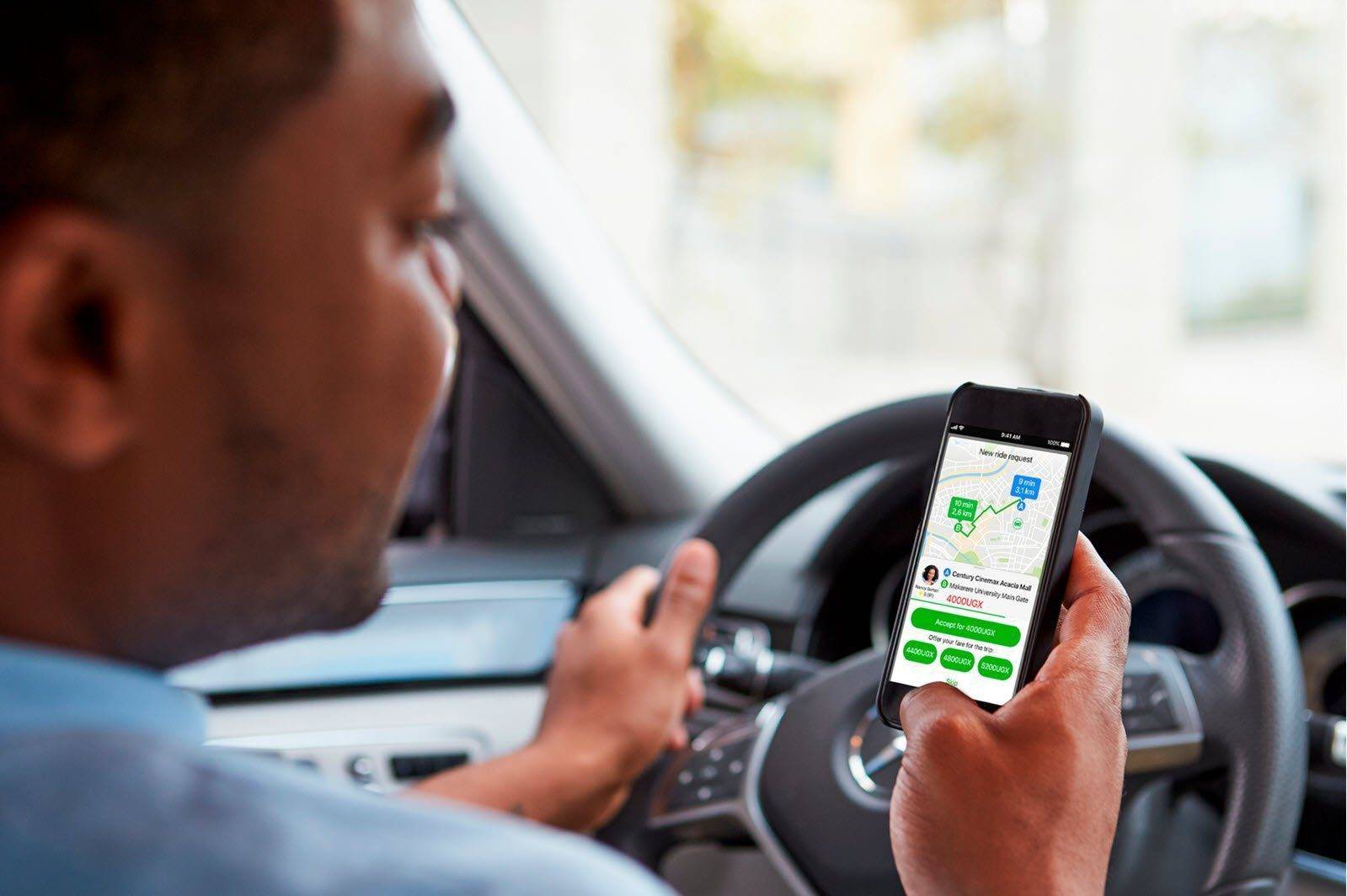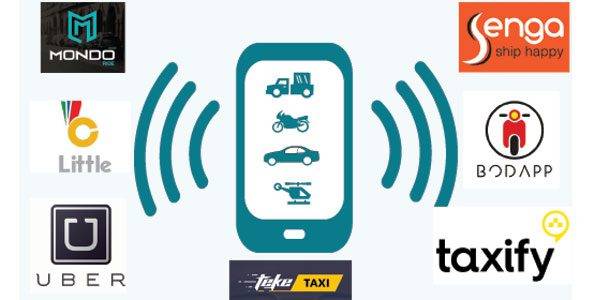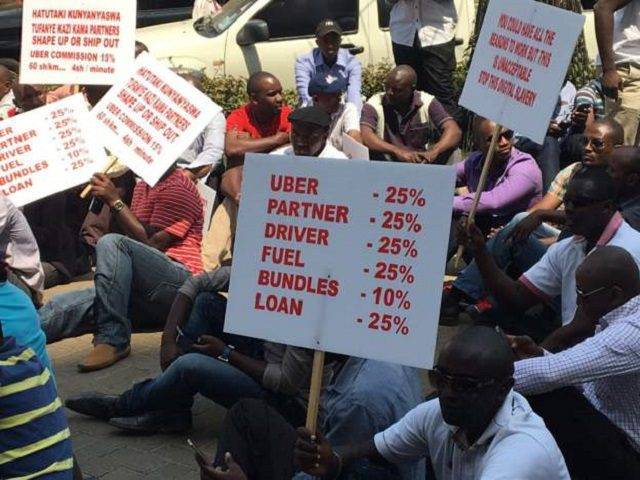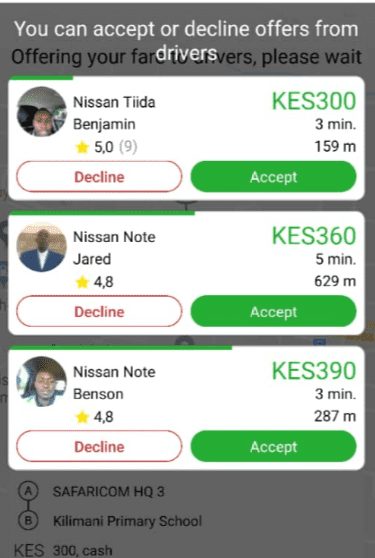Meet The Riding-hailing Firm Which Puts the Driver in The Driver’s Seat

Ride-hailing apps have become the new normal taxi option in Kenya with new entrants launching into the market time and again. Uber set the trend during its introduction to the market in 2015. The taxi business by Uber prompted other companies to emulate it leaving the traditional cabs behind.
For instance, players like Bolt, Mondo, Little, Sendy, Easy taxi followed suit in a bid to get a piece in the taxi service business beginning 2016. Currently, there are at least 5 active apps operating in the country.
To ward off competition in the highly-dense market, most of these cabs opted for unique strategies to woo clients into their space. Some strategies, however, failed to work and in some cases, the new entrants such as ShareCab collapsed.
Mondo, for instance, promised to be the only app offering consumers the ability to accept or block customers based on the details of their profile. Using the device, “Mondo Ride Caller”, customers would call and order safe and reliable taxis from the city’s hotels, malls, and premium locations with a single click.
This app is now on the verge of collapsing after it suspended taxi rides for corporate clients and the country manager quit and left the country.
Little, on the other hand, which was developed in partnership with giant telco, Safaricom, came into the market with a unique strategy targeting a female-only service and non-smartphone users who could request a ride on their phones without going to the internet.
To keep up with fast city life and evasion of traffic jams, Uber, Bolt, and Mondo targeted this mini-market with a bodaboda service which is rapidly gaining traction among many people in Nairobi.
Such quick revolutions show how the taxi business service is rapid and evolving, the market is getting bigger and competitive, its never enough to predict how quick the growing middle class in the East Africa region gets.
Evidently, these taxi-hailing rides have a common target on the customer who is perceived to be the main source of revenue for these firms.

Fearless and boldly, New York-based- service In driver has penetrated Kenya’s concentrated market with a very unique strategy targeting the driver. Will it survive the competitive market? Will the strategy work? Or is it just another trial and error?
The app was founded in Yakutsk in Russia in an attempt to curb drivers’ tendency to hike fares during the cold season leaving people stranded. A group of university students created a group of INdependent DRIVERers who would heed to request from passengers at a negotiable price.
In Africa, it established its presence through Tanzania, South Africa, Kenya and its latest launch in Kampala, Uganda. In an interview with Weetracker.com, the head of driver recruitment Kenya, Elibariki Kivuyo said that the entry point through East Africa is due to its rapid economic growth, large population and high reception towards new technology which makes it an ideal market for the ride-hailing service.
Since its inception, the company now has 24 million users in more than 200 cities in America, Latin America, and Russia. It plans to spend USD 500Mn for expansion of the service into Africa.
While other ride-hailing cabs have focused more on profit-making, good revenue and reaping profits, this startup employs a different approach with unique services and features especially the bargaining power which ensures the driver maximizes on profits.
However, all is not so good for this app which, according to Elibariki, is having a tough time as a new entrant in Kenya due to the previous actions of other players which has made it difficult for them to convince drivers of its good package.
“The high commissions, poor services, poor pricing and inconsiderate lifestyle have forced these drivers to believe that a ‘zero commission’ cab with a lot of other huge benefits is a scam for the drivers,” he explained to WeeTracker.
Taxi drivers in Kenya have always complained of high commissions, poor regulations of pricing, In the latest strike issued for 15th July, members affiliated to Uber, Taxify and all other taxi applications said they are demanding better working terms, a sustainable business model and introduction of online taxi regulations.

As part of the plans to encourage more entry from drivers and maximizing of profits, InDriver does not take any commission from all its services launched in African countries, the zero commission policy is expected to last from 0 to 6 months depending on the business adaptation in the region.
For a customer to book a vehicle, the model allows them to set their own fare for their chosen route, nearby drivers receive notifications of ride requests and have three choices: Either to accept the requested far, ignore the offer or bargain for a much higher price that is aligned with the pre-approved rates

Unlike other apps which, restricts drivers from ignoring or cancelling a nearby offer, this app allows the driver to do so without the risk of being penalized.
Initially, the app allowed passengers to set their own fair but this feature was misused by most clients who set as low as Sh 5 for as long as a 10km distance.
In the revised policy, if a passenger sets a low price, the app will automatically raise the amount to the fair minimum one but if one chooses a higher price, the app cannot set the minimum price for the ride.
Just like Uber which recently listed on the NYSE, the firm plans to go public on the New York bourse in future. “So far, the company is relying on investors money to expand and boost its growth globally,” Elibariki added.
Whether this latest ride-hailing app survives in the Kenyan taxi space or not, remains unknown. However, its unique strategy which focuses on the driver is impressive as it comes at a time when other drivers are protesting high prices for their services. For inDriver, the company has put the driver on his seat letting him do the driving with lesser restrictions.
Featured Image Courtesy: PC Tech Magazine